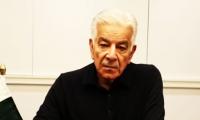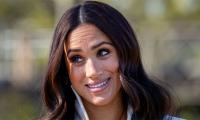Since 1890 the Hasani Primary Boys School (HPBS), formerly the Madrasa Hasani, has been providing accessible education for free to underprivileged children from religiously diverse and multiethnic backgrounds in the densely populated old city areas.
Even though it boasts of distinguished graduates like General Ziaur Rahman, who was the president of Bangladesh from 1977 to 1981, now almost no one knows about this prestigious institute that is part of our educational heritage.
The school management comprising the fifth generation of the institute’s founder, Seth Alibhoy Karimji Alavi, charges a nominal fee between Rs200 and Rs1,000 for providing English-medium education. They say they spend the collected amount on the wellbeing of the students and for the annual raise in the salaries of teachers.
The school also reflects the pre-Partition era, when the Hindu, Farsi, Muslim, Christian and other communities lived in peace and harmony, contributing to the development of Karachi as well as society.
The institute was initially Gujarati-medium and later turned into an Urdu-medium school. Now it offers education in the English language. In its 129-year journey the school has seen several ups and downs.
A brief history
Located on Syedna Tahir Saifuddin Road in front of the city courts, the school’s foundation was laid by Bohra community leader Seth Alibhoy Karimji Alavi in 1890. He was a prominent businessman who had also established an export start-up named Yusufali Karimji & Co. on Napier Road in 1896.
“Karimji had started the school with a single classroom in Nanak Wara, behind the city courts, near the Adhumal Oodharam Quarter, where a famous Murgh Chholay eatery can be found now,” said 58-year-old Mahmood Ali Alavi, Karimji’s great-great-grandson.
He added that when the number of children increased, the Hasani Academy Society (now the Hasani Trust) decided to build a new building on a plot adjacent to the Adam Masjid. There the school has been functioning since 1931, he said, adding that due to limited financial resources the structure was built in 14 years with the help of some expert architectural engineers of the day.
In 1885, when Hassan Ali Effendi founded the Sindh Madrasa, alma mater of Quaid-e-Azam Muhammad Ali Jinnah, Karimji had participated in its inaugural ceremony and announced financial support for the institute. Karimji was also among the 13 board members of the Sindh Madrasa. Perhaps Karimji set up the Madrasa Hasani after being inspired by Effendi’s educational movement in Sindh.
The objective
The school’s souvenir book published in 1990 to commemorate its 100th anniversary reads: “Before Partition, Karachi’s educational demography was almost community-based. The Hindu, Farsi, Sindhi and Christian communities had set up their own schools, while there were only a few schools for Muslims.
“In the early 1900s, even the Karachi Municipality Board, now the Karachi Metropolitan Corporation, was operating only one Urdu-medium school in the city for the Muslim community.”
Therefore, Karimji established an educational institute with the objective of ‘knowledge and action’ for Muslim communities. Initially, only seven students had enrolled in the school. However, there was no restriction on the enrolment of Farsi and Hindu pupils.
“Madrasa Hasani used to be a community school, but never in its long history has it declined admission to any student on the grounds of their religious or ethnic background,” said Mahmood Ali Alavi.
The souvenir further reads that owing to the growing educational need of the Muslim community, the administration of the Madrasa Hasani started teaching in Urdu along with Gujarati in 1910, and that the Mumbai University recognised it in 1934.
But after Partition, the Sindh University accredited the school, while the Board of Secondary Education Karachi affiliated it in 1951, even though the institute’s first matriculation batch had graduated in 1928.
The expansion
The Bohra community, particularly the Alavi family, and of them mainly Yusufali Alavi, Tayabali Ali Alavi and the first Muslim Karachi mayor, Hatim Alavi, lent their valuable resources to develop the city.
They later established three more schools: the Sheikh Jivanji Ebrahim Girls Primary School built in 1900, the Tayabali A Alavi Boys Secondary School (previously known as the Karachi Academy) in 1924 and the FC Moriswala Girls Secondary School (formerly known as the Muslim Girls Academy) in 1933.
“I recall with fondness my association with the Alavi family, who were primarily responsible for the establishment of these institutions. Mr Tayabali Alavi’s role in uplifting education in this city is well-known,” writes former Sindh chief minister Aftab Shaban Mirani in the souvenir book.
“When Hatim Alavi became the first Muslim mayor of this city, he carried on the tradition of his forefathers and set up many other institutions.”
After Partition
In the aftermath of Partition, Gujarati teachers belonging to the central provinces migrated back and the school confined its syllabus to Urdu-medium in 1960. However, after the then prime minister Zulfikar Ali Bhutto introduced his nationalisation policy in 1972, the Madrasa Hasani also went under government control.
“When our schools were nationalised, the donors stopped donating. Educational and teaching standards fell. A breakdown was observed in student discipline. The libraries and laboratories remained empty,” said Mahmood Ali Alavi, adding that no concerts, plays, recitals, debates, elocution contests or outdoor games were held during that phase.
But that is not all. The school playground that belonged to the Hasani Trust was taken over by the government and converted into a parking lot for motor vehicles and trucks, he said. Later, the Hasani Academy Society legally struggled to reclaim the school from the government and finally succeeded in August 1990.
Transformation
Before the HPBS came into existence, the institute had taught in different languages, including English, Farsi, French, Gujarati, Urdu and Arabic. Later, however, the school adopted the government-approved curriculum.
When the Hasani Academy Society resumed control of the school in 1990, it decided to convert the institute to English-medium. “We wished to continue using Urdu as the medium of instruction, but most parents refused to enrol their children. So, we decided to switch to English.”
Now the school also offers subjects in the science, arts and commerce disciplines. “My great-great-grandfather had started the school with the aim to educate every child of the city. Our mission still carries on.”







